More on String Theory's Troubles
 |
| Lee Smolin's The Trouble with Physics |
 |
| Peter Woit's Not Even Wrong |
String theory, which has also been called superstring theory, is (according to Holt) not yet even a full-fledged scientific theory. It "remains a seductive conjecture rather than an actual set of equations." At its base is the idea that the fundamental components of matter are not elementary particles, like quarks and leptons, but vibrating "strings" no more substantial than “tiny one-dimensional rips in the smooth fabric of space.” That is, all quarks (protons and neutrons are made of quarks) and leptons (an electron is a lepton) are basically strings.
For this to be so, apparently there have to be six more spatial dimensions than the three we see. That's what the mathematics tells us, at any rate. There seems to be no way to observe those extra dimensions, which have "curled up into some microgeometry that makes them invisible." An analogy given by Holt is to a stretched-out garden hose, which from a distance seems to represent a one-dimensional line, but from closer up reveals "a second dimension, curled up into a little circle."
But the extra dimensions required to make string theory work at all in unifying quantum mechanics with Einstein's theory have led to a conundrum: there are more than one mathematical way to model the invisible dimensions. Enter the "M-theory" of string guru Edward Witten, "the first physicist to be awarded the Fields Medal, considered the Nobel Prize of mathematics."
"In addition to vibrating strings, M-theory allowed for vibrating membranes and blobs," writes Holt. By encasing string theory in the more commodious M-theory, Witten in 1995 showed how "five seemingly distinct theories" into which the original string theory had split "were mere facets of something deeper" — and even less subject to empirical verification, it seems.
Unfortunately, "the non-uniqueness problem" which stood then at five models and counting has now "grown to ridiculous proportions," according to Holt's reading of Woit and Smolin. "At the latest count, the number of string theories is estimated to be something like one followed by five hundred zeros."
That's a lot of facets. Each represents a possible universe. Our universe, for example, is presumably modeled by a particular one — "with its own 'local weather' and history" — of these 10500 theories. But which model is right for us, and how do we tell?
Or, looked at another way,
What if all these possible universes actually exist? Perhaps every one of them bubbled into being just as our universe did. (Physicists who believe in such a “multiverse” sometimes picture it as a cosmic champagne glass frothing with universe-bubbles.)
Talk about non-empircal! How would we ever verify or refute the claim that there are 10500 other universes besides ours? Yet it's the contrary assertion that interests me. Some string theoirsts are now embracing the "anthropic principle" as a way of limiting the overfecund theory of strings to only this one known universe. (See also this article for more on the anthropic principle.)
Supporters of the anthropic principle recognize that, per Holt, "most of these [alternate] universes will not be biofriendly, but a few will have precisely the right conditions for the emergence of intelligent life-forms like us." The principle they support suggests that "the fact that our universe appears to be fine-tuned to engender life is not a matter of luck."
The principle itself states, perhaps a bit circularly, that "if our universe weren’t the way it is, we wouldn’t be here to observe it." We're here, though, and (so say the principle's boosters) we ought to be permitted as scientists to use the principle "to weed out all the versions of string theory that are incompatible with our existence, and so rescue string theory from the problem of non-uniqueness."
"Smolin and Woit," however, says Holt, "view the anthropic approach as a betrayal of science." It puts scientists in the position of hanging all their hopes for a "theory of everything" on a claim that "our universe appears to be fine-tuned to engender life." That strategy has at least two drawbacks. One, there's no way to falsify the anthropic claim, which violates philosopher of science "Karl Popper’s dictum that if a theory is to be scientific it must be open to falsification." In fact, the anthropic principle is little more than a truism, a "claim so obvious or self-evident as to be hardly worth mentioning." Two, it figuratively puts man back at the center of the universe, a position of privilege he lost when Copernicus told us the solar system was heliocentric.
Science has, over the last several centuries since Copernicus, sought to counter man's anthropic chauvinism by discovering that our sun is an ordinary star in the hinterlands of one of the billions of galaxies in the universe, the Milky Way. Then came Darwin's revelation that all of us sentient creatures descend from apelike ancestors. Evolution, say Darwinists, programmed us with certain inbuilt tendencies to believe what science disproves, one of those biases being that Someone Up There, beyond the natural world, favors us especially. Some of the freethinkers who resist using the anthropic principle to constrain string theory complain that elevating that principle to the apex of all science could let God back into the picture bigtime.
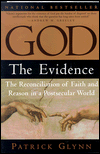 |
| Patrick Glynn's God: The Evidence |
Patrick Glynn['s] 1997 book God: The Evidence asserts that recent scientific developments constitute a "powerful — indeed, all-but-incontestable — case for what once was considered a completely debatable matter of 'faith': the existence of soul, afterlife, and God." ... He adds [in a March 1998 interview]: "The anthropic principle puts the antitheists, the people who are arguing against the existence of God, in a very tough spot."
Unless physicists come up with some new super-duper master theory which picks out our universe from all the countless string theory possibilities, there seem to be only two tenable string-friendly strategies, beyond simply calling the ground rules of our particular cosmos brute facts without any scientific explanation. One is the multiverse idea, and the other is the anthropic principle. Neither appeals to Woit or Smolin, which is why they aren't string-friendly.
 |
| Leonard Susskind's The Cosmic Landscape |
Leonard Susskind, a founder of [string] theory and one of its leading practitioners, brazenly lays out this no-boundaries attitude on the first page ... . His research, he declares, "touches not only on current paradigm shifts in physics and cosmology, but also on the profound cultural questions that are rocking our social and political landscape: can science explain the extraordinary fact that the universe appears to be uncannily, nay, spectacularly, well designed for our own existence?"
Susskind, says the review:
... proposes that those 10500 possibilities [represented by string theory] represent not a flaw in [the] theory but a profound insight into the nature of reality. Each potential model, he suggests, corresponds to an actual place — another universe as real as our own. In the spirit of kooky science and good science fiction, he coins new names to go with these new possibilities. He calls the enormous range of environments governed by all the possible laws of physics the "Landscape." The near-infinite collection of pocket universes described by those various laws becomes the "megaverse."
Megaverse, multiverse ... same idea. The anthropic principle tells us absolutely nothing, and there need not be a God.
So we seem to have a situation in which, in the absence of emipirical evidence one way or another, scientists are having (per Holt in The New Yorker) "a high-school-cafeteria food fight" over what is mostly theology by any other name.






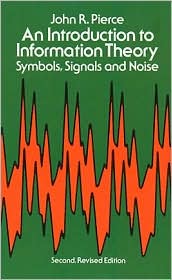

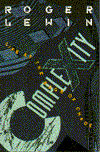
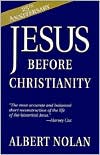
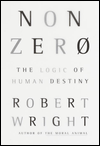

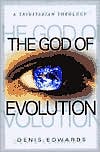





0 Comments:
Post a Comment
<< Home